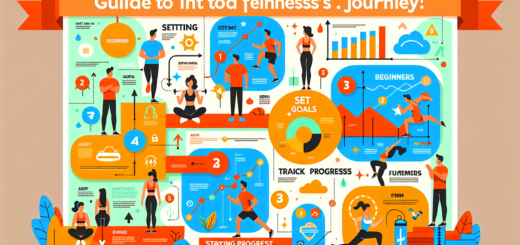What Does an Active Lifestyle Mean?
Living an active lifestyle means incorporating regular physical activity into your daily routine. It involves engaging in activities that get your body moving and your heart rate up, such as walking, jogging, dancing, or playing sports. An active lifestyle means making a conscious effort to prioritize your health and well-being by staying active and mobile. It is about finding enjoyment in movement and reaping the numerous benefits it brings, from improved cardiovascular health and increased energy levels to enhanced mental well-being. So, if you’re eager to learn more about the impact of an active lifestyle on your overall health, keep reading!
What Does an Active Lifestyle Mean?
An active lifestyle refers to a way of living that incorporates regular physical activity and exercise into your daily routine. It means making conscious decisions to move your body and engage in activities that promote overall health and well-being. An active lifestyle requires not only being physically active but also adopting healthy eating habits, maintaining mental and emotional well-being, and surrounding yourself with a supportive environment.
Definition of an Active Lifestyle
Physical Activity Levels
An active lifestyle involves different levels of physical activity, depending on individual capabilities and goals. Generally, it includes activities that increase your heart rate, improve cardiovascular fitness, and strengthen your muscles and bones. These activities can range from mild to moderate to vigorous intensity levels.
Being Active vs Sedentary Lifestyle
A sedentary lifestyle, on the other hand, involves minimal physical activity and prolonged periods of sitting or lying down. This lifestyle often leads to health issues such as obesity, heart disease, and diabetes. In contrast, an active lifestyle promotes better overall health and reduces the risk of chronic diseases.
Components of an Active Lifestyle
An active lifestyle encompasses various components that contribute to overall well-being. These include regular exercise, proper nutrition, mental and emotional well-being, and social interactions. By addressing all these components, you create a holistic approach to living an active and fulfilling life.

Benefits of an Active Lifestyle
Physical Health Benefits
Engaging in regular physical activity has numerous benefits for your physical health. It helps you maintain a healthy weight, improves cardiovascular health, strengthens muscles and bones, and enhances flexibility and balance. Regular exercise can also reduce the risk of chronic diseases such as heart disease, diabetes, and certain types of cancer.
Mental Health Benefits
Physical activity is not only beneficial for your body but also for your mind. It helps reduce symptoms of anxiety, depression, and stress, improving your overall mental well-being. Exercise releases endorphins, which are known as “feel-good” hormones, leading to improved mood and a more positive outlook on life.
Social Benefits
Adopting an active lifestyle often involves participating in physical activities and sports with others. This social aspect promotes bonding, camaraderie, and a sense of belonging. Engaging in group activities or exercising with friends and family provides an opportunity to build relationships, increase social interactions, and establish a support system.
Physical Activity Guidelines
Recommended Weekly Amount of Physical Activity
To achieve the full benefits of an active lifestyle, it is essential to follow the recommended guidelines for physical activity. The World Health Organization (WHO) suggests that adults should engage in at least 150 minutes of moderate-intensity aerobic activity or 75 minutes of vigorous-intensity aerobic activity per week. Alternatively, a combination of moderate and vigorous activity can also be beneficial.
Types of Physical Activity
Physical activity can be categorized into three main types: aerobic, strength training, and flexibility exercises. It is important to include a variety of activities from each category in your weekly routine to enhance overall fitness and prevent boredom.
Intensity Levels
Physical activity can be classified into light, moderate, or vigorous intensity levels based on the effort required. Light-intensity activities include walking or household chores, while moderate-intensity activities include brisk walking, swimming, or cycling. Vigorous-intensity activities include running, high-intensity interval training (HIIT), or playing sports like basketball or soccer. Incorporating activities from different intensity levels ensures a well-rounded and balanced active lifestyle.

Types of Physical Activities
Aerobic Activities
Aerobic activities, also known as cardio exercises, focus on increasing your heart rate and improving cardiovascular fitness. These activities include brisk walking, running, cycling, swimming, dancing, and aerobics classes. Engaging in aerobic activities regularly helps improve endurance, burn calories, and keep your heart and lungs healthy.
Strength Training
Strength training involves using resistance or weights to build and strengthen muscles. This type of activity can include lifting weights, using resistance bands, or performing bodyweight exercises such as push-ups and squats. Strength training not only helps increase muscle mass but also improves bone density, enhances metabolism, and supports overall physical function.
Flexibility Exercises
Flexibility exercises, such as stretching or yoga, focus on improving and maintaining the range of motion in your joints and muscles. These activities help increase flexibility, reduce muscle stiffness, and prevent injuries. Regular stretching and flexibility exercises also contribute to better posture and spinal alignment.
Balance and Coordination Activities
Balance and coordination activities aim to improve stability, body control, and spatial awareness. These activities can include yoga, tai chi, or exercises that require precise movements and balance, such as balancing on one leg or using balance boards. These activities are especially important for older adults as they help prevent falls and promote independence.
Setting Goals for an Active Lifestyle
SMART Goals
When adopting an active lifestyle, it can be helpful to set specific, measurable, achievable, relevant, and time-bound (SMART) goals. SMART goals help provide clarity and focus, ensuring you have a clear roadmap to follow. For example, rather than setting a vague goal like “exercise more,” a SMART goal would be “walk for 30 minutes every day for one month.”
Long-term vs Short-term Goals
Setting both long-term and short-term goals is essential when it comes to sustaining an active lifestyle. Long-term goals may include running a marathon or achieving a specific fitness milestone, while short-term goals can be weekly or monthly objectives that lead to the accomplishment of the long-term goals. Having a balance between the two keeps you motivated and provides a sense of achievement along the way.
Tracking Progress
Tracking your progress is crucial to monitor your growth, celebrate achievements, and make necessary adjustments. Keep a record of your physical activities, exercise routines, and any measurable goals you have set. This can be done using a fitness tracker, a workout journal, or even a simple note-taking app on your phone. Seeing your progress over time can boost motivation and help you stay on track.
Creating an Active Lifestyle Plan
Identifying Preferences and Interests
Building an active lifestyle plan starts with identifying physical activities and exercises that you enjoy. Consider your interests, hobbies, and things you’ve always wanted to try. Experiment with different activities and find what resonates with you the most. Whether it’s swimming, dancing, martial arts, or playing a sport, incorporating activities that you genuinely enjoy increases the chances of sticking to your plan.
Scheduling Time for Physical Activity
Time management plays a crucial role in maintaining an active lifestyle. Set aside dedicated time slots in your daily or weekly schedule for physical activity. Treat these time slots as non-negotiable appointments with yourself. By prioritizing and scheduling exercise, you are more likely to follow through and make it part of your routine.
Find Accountability and Support
Having a support system can greatly contribute to achieving an active lifestyle. Find a workout buddy or join group classes or sports teams. Having someone to exercise with provides motivation, accountability, and makes physical activity more enjoyable. Additionally, consider professional support from personal trainers or fitness coaches who can guide and tailor a plan specific to your needs and goals.
Adapting to Different Environments
An active lifestyle doesn’t have to be limited to a gym or a specific location. Be adaptable and embrace opportunities to be active in different environments. For example, if you’re traveling, explore the local area by walking or cycling, or use hotel fitness centers. Take advantage of natural surroundings and engage in outdoor activities like hiking or swimming. Adapting your routine to different environments keeps your active lifestyle flexible and exciting.
Incorporating Exercise into Daily Routine
Active Commuting
One way to incorporate exercise into your daily routine is by adopting an active commuting method, such as walking or cycling to work or school. These active modes of transportation not only help you stay physically active but also save money on transportation costs and reduce your carbon footprint.
Workplace Exercise
Finding ways to exercise during the workday can significantly contribute to an active lifestyle. Take short active breaks to stretch or do quick exercises, like squats or lunges, at your desk. Use the stairs instead of the elevator, and consider standing or using a standing desk if possible. Engaging in physical activity during work hours boosts productivity, improves mood, and enhances overall well-being.
Home Workout
An active lifestyle can easily be achieved from the comfort of your own home. Set up a designated workout space and explore various home workout options such as following online workout videos, using fitness apps, or investing in home exercise equipment. You can choose from a wide range of workouts, including cardio, strength training, and yoga, all without leaving your home.
Family and Leisure Activities
Incorporating exercise into your family and leisure activities is a fantastic way to bond and have fun while maintaining an active lifestyle. Plan active outings like hiking, biking, playing sports together, or going for a walk after dinner. By involving your loved ones in physical activities, you not only create lasting memories but also inspire and encourage them to lead active lives as well.
Nutrition and Active Lifestyle
Healthy Eating Habits
Nutrition plays an integral part in supporting an active lifestyle. Maintain a balanced diet consisting of fruits, vegetables, whole grains, lean proteins, and healthy fats. Fuel your body with the nutrients it needs to perform optimally during physical activity and aid in post-workout recovery. Avoid excessive consumption of processed foods, sugary beverages, and foods high in saturated fats.
Pre- and Post-Workout Nutrition
To maximize the benefits of physical activity, it is important to fuel your body properly before and after workouts. Before exercising, consume a small meal or snack that includes carbohydrates for energy. Afterward, replenish your body with a combination of protein and carbohydrates to aid in muscle recovery and glycogen replenishment.
Hydration
Staying hydrated is crucial for maintaining overall health and supporting physical activity. Drink water throughout the day, especially before, during, and after exercise. Adequate hydration helps regulate body temperature, transport nutrients, and remove waste products. Remember to listen to your body and drink when you feel thirsty.
Mental and Emotional Well-being
An active lifestyle goes hand in hand with mental and emotional well-being. Physical activity releases endorphins, which boost mood and reduce symptoms of stress, anxiety, and depression. Engaging in activities that promote mindfulness, such as yoga or meditation, can also contribute to mental and emotional well-being. Prioritizing self-care and practicing stress management techniques, such as deep breathing, can further enhance the positive effects of an active lifestyle on mental health.
Role of Technology in an Active Lifestyle
Fitness Apps and Trackers
Technology has made it easier than ever to track and monitor your physical activity and progress. Fitness apps and trackers provide you with real-time feedback on your steps, heart rate, sleep patterns, and calorie burn. They can also offer personalized workout plans, exercise demonstrations, and motivational features to keep you engaged and motivated.
Online Workouts and Classes
The internet is filled with a wide variety of online workout videos and virtual fitness classes. Whether you prefer cardio, strength training, yoga, or dance, you can find a plethora of options online. This flexibility allows you to exercise at your convenience, in the comfort of your home, and follow workouts tailored to your fitness level and interests.
Virtual Reality Fitness
Virtual reality (VR) technology is revolutionizing the fitness industry by providing immersive and interactive workout experiences. With VR fitness, you can engage in virtual environments that simulate real-world activities, such as hiking, boxing, or even dancing. This technology makes exercising more engaging, entertaining, and motivating for individuals of all fitness levels.
Smart Home Fitness Equipment
The rise of smart home fitness equipment has made it easier to incorporate exercise into your daily routine. From smart treadmills and stationary bikes to interactive mirrors and strength-training equipment, these innovative tools provide access to professional workouts, virtual trainers, and real-time performance tracking. With smart home fitness equipment, you can enjoy the benefits of a gym without leaving your house.
In conclusion, an active lifestyle is more than just regular physical activity. It encompasses various components like exercise, proper nutrition, mental and emotional well-being, and social interactions. By understanding the definition of an active lifestyle, the benefits it provides, and following the physical activity guidelines, you can create a comprehensive and personalized plan. Incorporating different types of physical activities, setting SMART goals, and adapting to different environments can help you stay consistent. Additionally, integrating exercise into your daily routine, prioritizing nutrition, and nurturing mental and emotional well-being contribute to the overall success of an active lifestyle. With the support of technology, you can enhance and elevate your active lifestyle, making it more enjoyable and sustainable in the long run. So embrace the journey, make small changes every day, and embark on the path to a healthier and more fulfilling life through an active lifestyle.

















It's great that you talked about how business insurance can provide financial protection against unexpected events and help ensure the…
I like that you mentioned how business insurance is essential for protecting your bottom line and the long-term viability of…